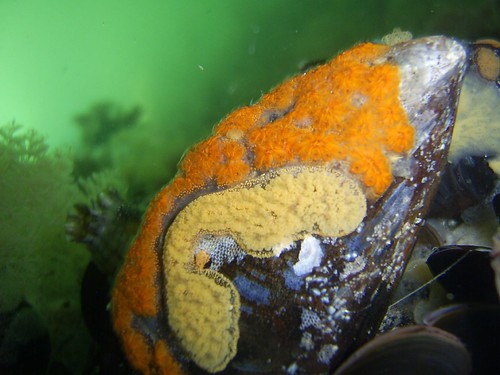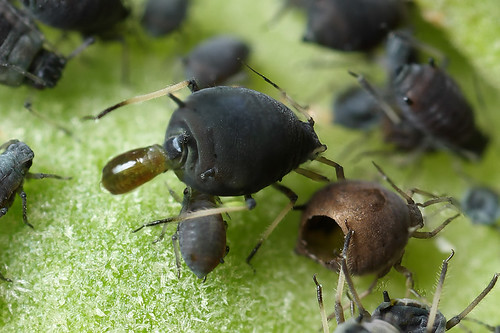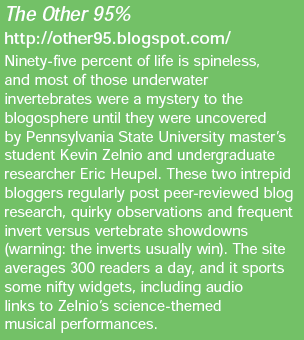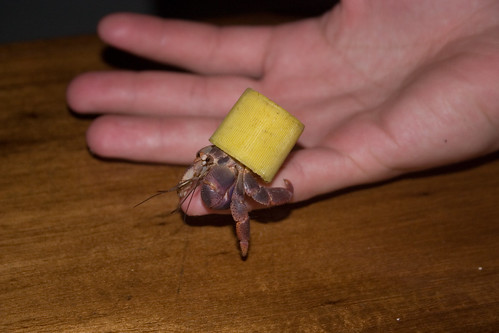Linnaeus Legacy is a blog carnival that seeks to highlight and celebrate Carl Linnaeus and his many contributions to science. Linnaeus left a lot of legacy to look at - taxonomy, biodiversity, botany and ecology were fields either created or heavily influenced by his work and ideas. Today he is most famous for binomial nomenclature and as the father of taxonomy. He was also a major contributor to botany, perhaps best known in that field now for his extremely risque (for the time) description of the reproductive systems of flowering plants. He influenced what would become ecology with his understanding of life forms in conflict with each other and as a part of its environment. So, on with the carnival!
Taxonomy in General
Let's start with some broad understandings of techniques and methods of taxonomy and the study of the diversity of life with Wild Shores of Singapore, highlighting a report from a recent annual meeting of taxonomists in Why Planet Earth Needs Taxonomists.
Peter Suber at Open Access News also covered the meeting's press release with a focus on one of the issues: bringing the 250 year old classification system Linnaeus originated into the 21st century with PhyloCode and Zoobank, an online, open access registry of organism names. Peter also provides some background reading on Zoobank elsewhere on the Open Access News site. Somehow I see Zoobank and the issues around it and PhyloCode being a regular topic in future Linnaeus Legacy editions.
Also reporting on news from a conference (on arachnids), romunov shares news of Anelosimus biglebowski and several other new species named for people real and fictional in Names in science – what a headache! If you have a species named after a person or yourself, let him know. (We'll have one later in this carnival for him too!)
Linnaeus Legacy founder Christopher Taylor, at Catalogue of Organisms, wrestles with the two personalities of taxonomy – nomenclature and systematics – describing each clearly and assessing it as a science as he asks a deceptively simple question: Is Taxonomy a Science?
John Wilkins reports on the decision from the UK House of Lords that "Systematics is Sick", as well as highlighting a new OA journal, Zookeys, for the description of new taxa.
In addition to being an excellent insect photographer, Alex Wild is a biologist working with insect evolution. From his new job he reports on some of the scientific names that have come from the taxonomist he will be working with. He hints that he and Paul Marsh will continue to bring playful and irreverent new names to the Heterospilus genus.
 Monomorium by Alex Wild
Monomorium by Alex Wild
Taxonomy Methods & TheoryWhile many reported on the naming of a trapdoor spider for Stephen Colbert,
Carl Zimmer brought us the method Jason Bond used to determine how many species were in this group of trapdoor spiders in
The species dating game.
Mr. Mymecos (Alex Wild) is back with some of his research about using 8 genes for
phylogenetic analysis of the beetle family tree. Of course, his
Friday Beetle Blogging is also worthy of mention in the legacy.
Charles Siegel examines phylogenetic trees from a purely mathematical point of view using
algebraic geometry, combinatorics and probability. This is a really intriguing posting I want to take a longer look at in detail.
Biodiversity and EcologyAnthony Judd at
Small fish, Big Apple summarizes an important paper which
calls for national to global-scale biodiversity measurements, which could be done using the information in current systems and combining them in a common data network with standardized data collection and reporting.
MycetozoaMiriam Goldstein brings the BORG to
The Oyster's Garter! She shows compelling evidence that
lowly slime molds are in fact smarter than Harry Potter. Of course, I'm not so sure how smart the whole sex = death bit is...but hey, it sure seems to work for them. You have to check out the video. Awesome. Now Miriam, can you spin that post to be a conversation opener?
CnidariaChristopher is back with
E Pluribus Unum at
Catalogue of Organisms. With a sprinkling of pages from Kunstformen der Nature, he brings us a detailed overview of the Siphonophores, planktonic "superorganisms" that can grow to 30m long or more!
MolluscaDracovenator's Adam Yates covers a genus of Australian cowries –
the Umbilia. An interesting group for several reasons, including direct development and a diversity of forms, which Adam shows with some beautiful fossil shells that reach back to the Oligocene.
A newly discovered species of giant clam was brought to the blogosphere by many, including
Deep Sea News and
Shifting Baselines, with the evidence that the new clam was possibly the first overexploited marine species.
Recently, Snail, of
A Snail's Eye View, decided it was time to expand into studying the bivalves, discovering along the way that bivalves don't all look the same! First up are the delicate
Laternulids. Snail's
struggles with bivalves are continued systematically with a steady start until...
 Umbilia eximia from dracovenator.blogspot.com
Umbilia eximia from dracovenator.blogspot.com
ArthopodaHermit crab diversity is on the mind of the guys at Diversity of Form, this month with wonderful photographs in a beautifully illustrated entry showing hermits from the POV of aquaria keepers.
In our own submission to Linnaeus Legacy, I petitioned for conservation of whale lice and then expanded on that tongue-in-cheek call with
Right Whale Lice, covering some recent literature, as well as doing my best to field a number of questions in the comments. (Thanks for that!)
 Pylopaguropsis keijii from glassbox-design
Pylopaguropsis keijii from glassbox-design
ChordataWhen a new species of bird is discovered, it is news to be spread, and two of our contributors had great posts on the discovery of the olive-backed forest robin!
A DC Birding Blog has an
excellent overview of the discovery, while
GrrlScientist offers a
complete review of the paper describing the new bird from Zootaxa. (And a beautiful bird it is too!)
Everything in oneKate of
The Radula – still the hand's down best blog (or
superhero) name evah! – has created a new
Life Photo Meme that fits right in with Linnaeus Legacy. The meme seeks to celebrate the diversity of life on Earth through a weekly posting of a picture of something alive or once alive and a description of the organism or the meaning of the image to the poster. Many participants have taken to also providing the Linnaean classification of the organism they show. There are weekly optional themes, including my personal favorite - First Thursday Honor an Invert Day!
Previous participants have posted
nudibranchs,
Brain Corals,
Fracking Ants,
assorted invertebrates,
great blue heron and
harvestmen, among many more. I know Kate would like to invite everyone to take part. Just post an image of some organism on (or close to ) Thursday, then go to the latest
Life Photo Meme entry and post a comment in the entry linking back your contribution. Inclusion of the meme badge in the post or the technorati tag
lifephotomeme will help track all contributions. Kate will also be hosting a future Linnaeus Legacy at Life Photo Meme.
 Microcentrum rhombifolium from Kate
Microcentrum rhombifolium from Kate
EcologyLinnaeus' ideas contributed greatly to the field of natural studies that would become ecology soon after his death. In the spirit of those contributions we have two ecological entries.
First up is a very intersting behavioral ecology, and philosophy contribution from
Greg Laden on
magpies and mirrors. Magpies, it turns out, "get" mirrors. Specifically, they recognize that the image in the mirror is indeed their reflection and are seen to groom areas of their body, using the mirror, which they normally can not see. Of course there are deep cognitive and philosophical issues which Greg touches on and it also changes our understanding of the biological prerequisites for self-recognition significantly.
On a fun "games and outreach" note, Andrea at Learnscape.org asks
"Can You Survive the Call of the Wild?" Wolfquest is a game that can be played on or offline, in which you must conquer the ecological challenges of life as a wolf in Yellowstone. The game was developed in part by the Minnesota Zoo. I must admit I have not yet played this one, but hopefully I can squeeze a few hours free to play test it for my son soon. I wonder if they included the recent research that wolves seem to prefer
fishing over hunting...
ExtrasRod Page of
iPhylo pointed out a
technology demo of a multi-touch display system that will rock when placed in museums and science exploration centers. The demo at iPhylo features someone navigating through a visual ITIS classification database. Heck, I would love to have a multi-touch visual taxonomy browser and explorer in my living room. Can you imagine tracking the
Craig and Peter's latest expeditions in a giant Google Earth interface like that?
From Jessica Palmer of
Bioephemera comes
Singing about phylogeny!
Carl Zimmer returns with an account of 30 hours of
celebrating Darwin and Linnaeus at the Chautaugua Institution, including a transcript of his contribution to the celebrations.
Emmet Duffy at
The Natural Patriot gives an in depth, but easy to read, review of a very important recent paper in PNAS, looking at
biodiversity and limits to growth. The bottom line is that we (i.e.
Homo sapiens) caused a sudden and irreversible planet-wide ecosystem shift away from high biodiversity. The rest of Emmet's post is filled with interesting facts and ideas that really cause one to pause, think and rethink.
FinallyMuch of taxonomy is done in museums. Their collections are often the residence of the critically important type specimens. One of the finest museums is the National Museum of Natural History. The museum and taxonomy lost a friend and colleague when
Cynthia Ahearn passed away on August 31st, at an entirely too young age. Cynthia's colleague ChrisM (
Echinoblogger) has put up a trio of posts
in her honor, about
her legacy and her just having
fun in her element.
 Narcissia ahearnae an Ophidiasteridae sea star named in honor of Cynthia Ahearn. Photo from Echinoblog.com
Narcissia ahearnae an Ophidiasteridae sea star named in honor of Cynthia Ahearn. Photo from Echinoblog.comWhew!! That's it for the 11th edition of
Linnaeus Legacy. I've had a blast reading through the submissions and look forward to next month's edition, which will be hosted by the eloquent Kylie Sturgess at
PodBlack Cat whose logo does indeed rock! You can submit your September entries to her at podblack -at- gmail -dot- com, or send them in through the
BlogCarnival submission system.











































